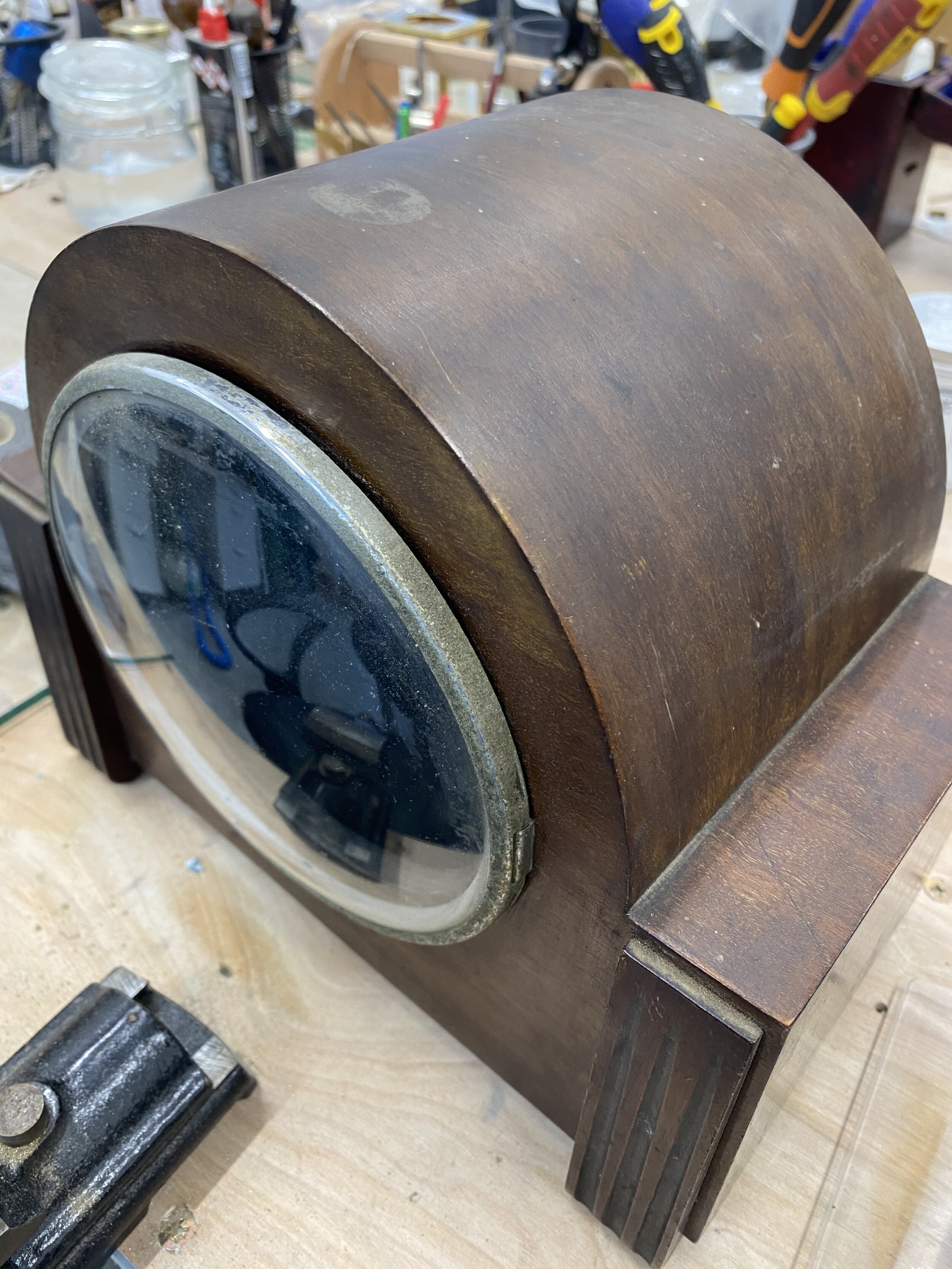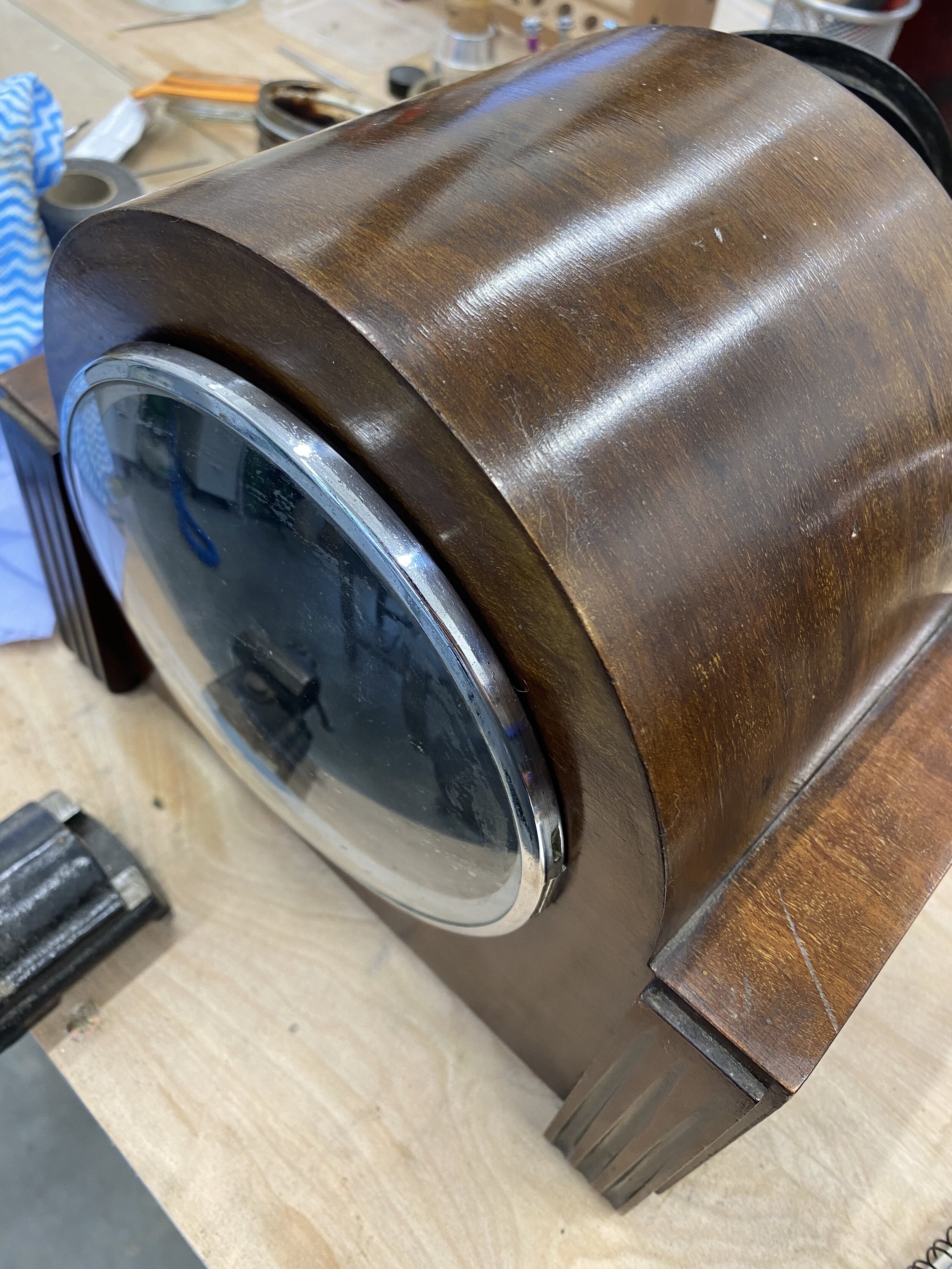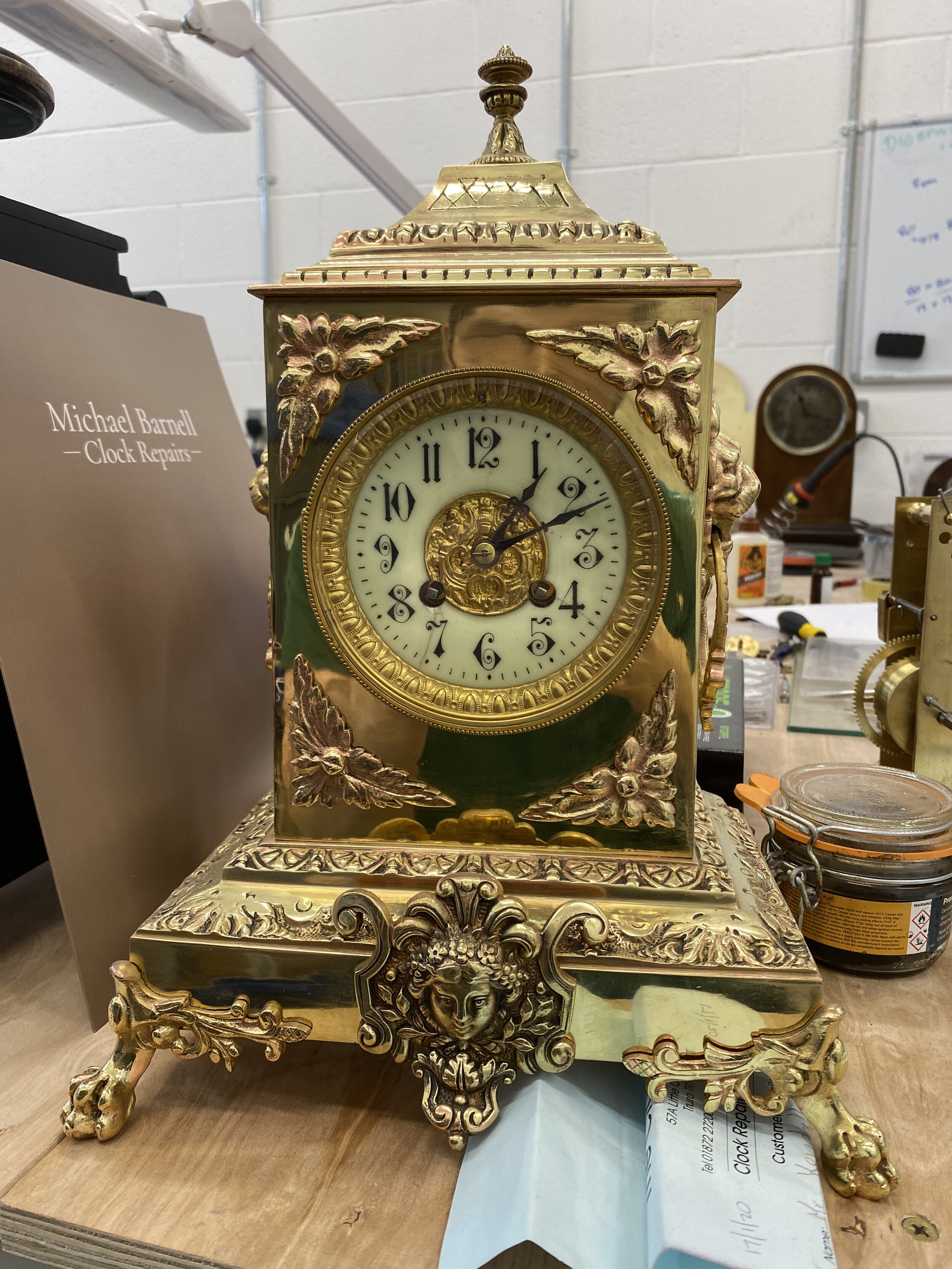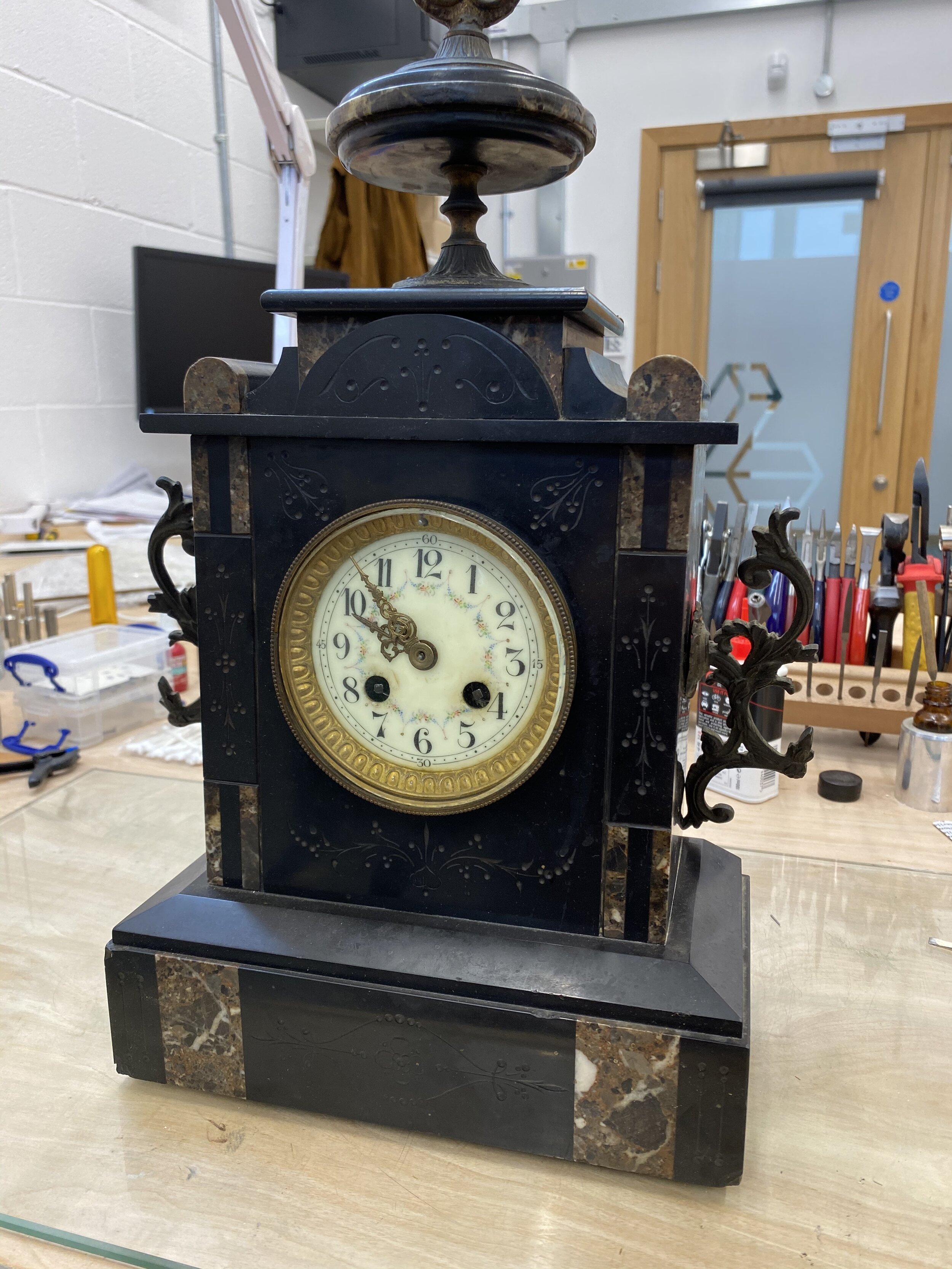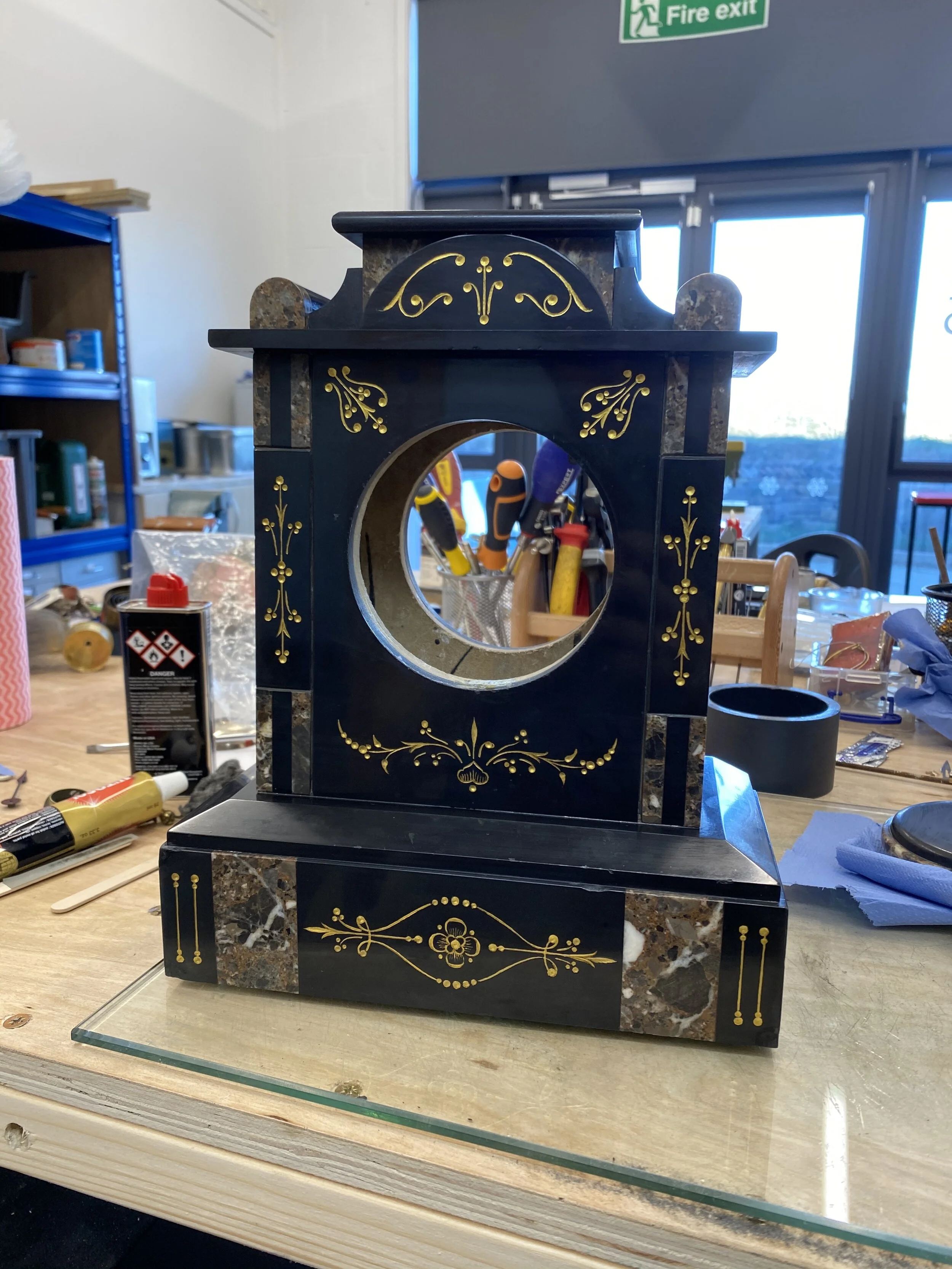How to Clean a Clock Case
The clock case is an often-overlooked part of the clock. Of course, the movement is really where it’s all going on, but on most clocks it’s the dial and case that you will ever really look at. In this post, I'm going to run through how to look after the case of your clock, so it continues to look as good as possible. There are many different styles of cases, but I will split them into three categories, which will cover most of the clocks I encounter.
Wooden Clock Cases
The majority of clocks I get in will fall into the category, be them grandfather clocks or mantel clocks. The number one reason for a worn-out looking case is not cleaning it, or not cleaning it with the correct products. I have had to refinish many clock cases that have been cleaned regularly with an aerosol polish. These aren’t really polishes and the chemicals will, albeit over time, strip of the finish on the clock.
The best way to look after these clocks, is to wipe of the dust with a clean and dry, cloth, be it an unused duster, or a ‘J Cloth’ type. Then, and this should only be on a yearly basis, apply a beeswax polish to the clock. I recommend Gilboys Beeswax. Their Antique Gold wax will suit most clocks, but they do two different colour waxes to match the wood its going on. Apply this with ‘0000’ Steel Wool. Leave the wax on for around 20 minutes and buff with a soft dry cloth.
Cases that are particularly dirty, or live in a room with a coal fire, may benefit with a clean with a soft cloth dampened with some warm soapy water, before moving on to the wax.
If cleaning a large clock case, such as a grandfather clock, I suggest doing the clock in stages, to avoid missing any bits.
I suggest periodically removing the hood on antique grandfather clocks and hoovering the inside. These old clocks are magnets for dust and its surprising how much can find its way through small cracks and into the movement.
Brass Clocks
Brass clocks, such as carriage clocks, tend to come to me covered in a chalk like substance, particularly around the glass. This is old Brasso that has been applied to keep the clock looking its best, by well-meaning owners. It’s an unfortunate fact of life that brass will oxidise and tarnish. When I polish a carriage clock case, I apply a lacquer to prevent the brass for tarnishing. This isn’t however something that should be attempted by the customer as it involves dismantling the case. Instead, I suggest just letting the brass tarnish. It’s easy enough for any competent clockmaker to remove the tarnish with the right chemicals.
Of course, if the customer would like to slow the tarnishing process down, I suggest Renaissance Micro-Crystalline Wax. This is a museum grade wax, that can be applied and buffed. It’s pretty much invisible, and after a few coats will prevent the case from tarnishing. This should be applied yearly, though if the clock is handled regularly more frequent applications may be necessary. In the interim, just, as with wooden clock cases, remove any dirt and dust with a clean dry cloth.
French Slate or Onyx Clocks
French slate and onyx clocks should be cleaned in a similar fashion to brass clocks, see above. Care should be taken around any gold leaf, but the Renaissance wax should help keep this stable.
The stone (they aren’t always slate, they may be marble or limestone) is very porous and will absorb any liquid, creating a discolouration around the area, so care must be taken to avoid getting the case wet or applying anything liquid to the case.
If the case as lost some of its lustre, a beeswax polish can be applied and buffed to a shine. This should be a high-quality beeswax, like the one mentioned above, with no colouring.
If you have any questions about how best to look after your clock case, or are interested in having any work done, please email me at barnellclockrepairs@gmail.com or use this Contact Form.

